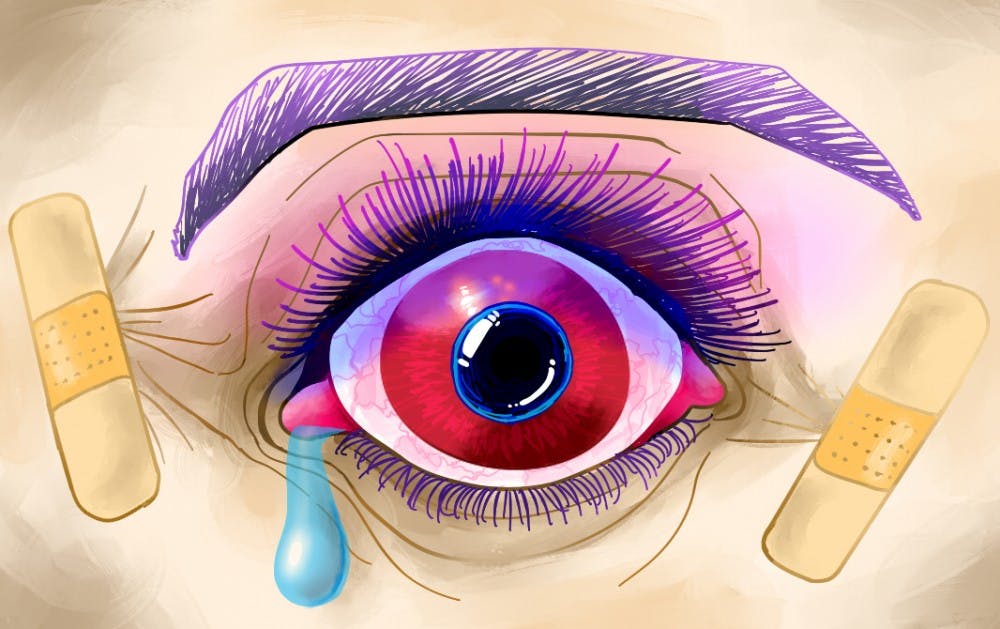In the age of Kylie Jenner lip kits and Snapchat filter-inspired plastic surgery, students are looking for ways to achieve the look many celebrities have. For many, this means eyelash extensions.
But these procedures can go wrong, causing health problems ranging from irritation to allergic reactions.
Artificial eyelashes have been common in American beauty since the 1930s. However, lash extensions as they are today were not popularized until around 2011 with the rise of the Kardashians, according to Jennifer Van Kirk, lash artist and owner of Lash Addict and Beauty Bar in Tempe. Many of her customers are ASU students, she said.
Julie Garcia, the owner of Designer Lashes in Scottsdale, has helped numerous clients over her career with treating unsafe lash extension cases.
She said she commonly comes across clients who have had an allergic reaction to the products or to the lashes themselves.
Allergic reactions can happen for a variety of reasons, Garcia said.
She said it can happen due to cheap materials, faulty application or sometimes — no reason at all.
“Allergies sometimes are a lot like lactose intolerance," Garcia said. "People can have milk until they realize that it’s starting to bother them after they’ve had so much of it. It’s the same with lash extensions. The cyanoacrylate in the adhesive is what gives the synthetic lash the bond to the natural lash … A lot of times, that’s the ingredient people are allergic to.”
Cyanoacrylate is an essential part of the lash glue. However, if the glue is applied correctly, allergic reactions are highly unlikely.
Dr. Stefanie Schroeder, a physician at ASU Health Services and chief of medical staff, said Health Services urges students to remove eyelash extensions if an allergic reaction occurs.
"It’s an offending agent, and unless (the extensions are) removed, the allergic reaction is going to continue," Schroeder said. "Then we would probably treat them like any other allergic reaction with antihistamines and steroids.”
The training to apply lash extensions correctly comes from being a licensed esthetician, and there are ways that students can confirm that the lash artist they're going to is legitimate.
Dana Swanson, owner of esthetic studio Simply By Dana and lash artist, explained that according to Arizona state law, eyelash extensions must be preformed by a state licensed esthetician.
“That’s a new law … For a while, you didn’t have to be licensed," Swanson said. "So students interested in these services should always ask to see (the artist's) license, just to make sure.
Swanson said she knows several clients who go to non-licensed estheticians to get services done, possibly for cost reasons.
“You want a licensed esthetician because they know the proper sanitation and application practices … among other health and safety reasons,” she said.
Swanson has seen many clients come from less reputable salons with damaged and irritated lashes.
“The number one thing I see that is damaging the lashes is improperly trained people putting multiple artificial lashes on one natural lash,” Swanson said. “The reason the one to one ratio is so important is because if you glue two natural lashes together, they grow at different rates and it damages the slower growing lash.”
Swanson said that it takes about three months before lashes completely grow out, but lashes — just like eyebrows or other types of hair — don’t always grow back.
Swanson has witnessed multiple clients who have gaps in their natural lashes as a result of improper eyelash extension applications by other lash artists.
While lash extensions remain the more commonly known eyelash enhancing service, there are other alternatives.
“Another great alternative for students is a lash perm,” Swanson said. “It’s less costly (and) the results are amazing.”
Swanson said ASU students and other consumers should not be afraid of asking questions.
"Putting students in the power of their own health and lashes is really fantastic," Swanson said."
Reach the reporter at nesherwo@asu.edu or follow @thecolesherwood on Twitter.
Like The State Press on Facebook and follow @statepress on Twitter.




